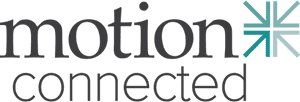Employee well-being isn’t just a buzzword anymore; it’s a strategic priority that impacts recruitment, retention, and overall organizational success. One of the most effective ways to ensure that well-being initiatives gain traction is by forming a wellness committee (often referred to as a wellness champion team). These committees harness the passion and insight of employees across various departments, driving meaningful, measurable outcomes in employee engagement and overall corporate wellness.
In this blog, we’ll explore the purpose of a workplace wellness committee, share best practices on how to form one, and discuss how utilizing tools like an employee experience platform can elevate your committee’s impact. We’ll also touch on the importance of benefits navigation and healthcare literacy—two elements that can take a wellness program from average to outstanding.
What is a Wellness Committee, and Why is it Important?
At its core, a wellness committee is a group of volunteer ambassadors who help plan, promote, and execute well-being initiatives within the organization. By leveraging the enthusiasm of these champions, organizations can:
1. Increase Employee Engagement
When people see their co-workers actively championing wellness, they’re more likely to join challenges, attend educational events, and make use of available well-being resources.
2. Foster a Culture of Health
A wellness committee creates momentum for healthy habits, whether that’s through lunchtime walking clubs, biometric screenings, fitness trackers, or mental health check-ins.
3. Improve Benefits Navigation
Committee members can serve as on-the-ground resources, guiding colleagues through complicated offerings like health insurance, financial wellness options, and stress-management programs.
4. Enhance Healthcare Literacy
By sharing wellness tips, clarifying health plan details, and organizing educational sessions, your wellness committee can demystify healthcare jargon and drive better decision-making.
Lay the Groundwork: Gain Leadership Support
A crucial first step to starting a successful wellness committee is recruiting committee members; e.g., you’ll need to secure buy-in from management. This step is important for numerous reasons, including:
- Allocating time and resources: Leadership support ensures your committee can meet during work hours and receive a modest budget for initiatives (e.g., healthy snack samples, workshop materials).
- Overcoming potential resistance: When leaders endorse a program, employees are more open to participating.
- Tying wellness to broader organizational goals: Aligning the committee’s initiatives with strategic goals (like reducing healthcare costs or boosting morale) underscores the value of your efforts.
Pro Tip: Encourage a top executive or department lead to champion the committee’s goals. When leadership sets the tone for a wellness-focused environment, it positively influences the entire organizational culture.
Recruit the Right Wellness Champions
A wellness committee should be diverse and inclusive, reflecting your workplace’s different departments, demographics, and job roles. Aim to recruit:
- Passionate Employees: Individuals who are enthusiastic about health and well-being, regardless of their current fitness levels.
- Natural Communicators: People who excel at rallying team spirit, bridging communication gaps, and sharing updates in an engaging way.
- Subject Matter Influencers: Employees who have a pulse on what their departments need—from shift workers’ scheduling constraints to desk-bound staff’s ergonomic concerns.
Creating a short “role description” that outlines your committee’s expectations can significantly help your search for the right wellness champions. Emphasize that any employee (no matter their own personal wellness journey) can be a champion if they truly want to help others live healthier, more balanced lives.
Provide Clear Roles and Responsibilities
Setting transparent expectations ensures every committee member understands their contribution. Typical roles include:
- Chair or Co-chair: Oversee the committee’s overall strategy, facilitate meetings, and coordinate with leadership.
- Event Coordinator: Handle logistics for workshops, lunch-and-learns, health fairs, or wellness challenges.
- Communications Lead: Draft internal emails, newsletters, or intranet posts to keep everyone in the loop.
- Data & Metrics Person: Collect participation data, track outcomes, and interpret results (e.g., improved engagement, reduced absenteeism).
By outlining distinct roles, you help committee members own specific tasks, preventing overlap and burnout.
Leverage an Employee Experience Platform
An employee experience platform can be a game-changer for a wellness committee. Here’s how:
- Centralized Hub: Store program details, educational resources, and sign-up links for challenges and events in one place.
- Gamification & Challenges: Host wellness challenges (steps, hydration, meditation streaks) that award points and badges, fostering friendly competition.
- Real-Time Feedback: Gather surveys and polls so you can adjust strategies quickly.
- Benefits Navigation: Offer direct links to healthcare providers, telehealth services, and financial wellness resources to simplify employees’ search for benefits information.
Having a centralized digital solution not only streamlines communication but also enhances user engagement—especially in today’s remote or hybrid work environments.
Hold Effective, Regular Meetings
Organizing the team is only half the battle; staying aligned is the other. Schedule meetings:
- At Least Quarterly: Review upcoming events, recap successes and challenges, and pivot if needed.
- With Agenda & Action Items: Keep discussions focused by setting clear objectives for each meeting.
- In a Format That Works: Virtual, in-person, or hybrid—choose the structure that accommodates your employees best.
Stay in touch between official meetings via quick chat check-ins, emails, or message boards. The faster you address potential issues, the more agile your committee will be.
Run Meaningful Wellness Initiatives
Your committee should lead targeted initiatives that appeal to a wide array of employee interests and needs:
- Physical Health Programs: Health screenings, walking clubs, onsite yoga, or healthy potlucks.
- Mental Wellness Workshops: Stress management, mindfulness sessions, and Employee Assistance Program (EAP) overviews.
- Financial Wellness & Healthcare Literacy: Invite financial advisors or benefits specialists to explain 401(k) contributions, health savings accounts (HSAs), or insurance details—helping employees navigate these benefits with greater ease.
- Social Connection: Encourage peer-to-peer challenges (step count, water intake), coordinate volunteer opportunities, or organize team-building events that cultivate community.
Well-designed events reinforce the idea that well-being is an ongoing journey, not a one-off initiative.
Track, Measure, and Celebrate Success
To validate your committee’s work and build long-term sustainability:
- Set KPIs: Define success metrics like participation rates, satisfaction scores, or changes in health risk assessment data.
- Collect Feedback: Use surveys, digital polls, or platform analytics to gather employee input on what worked and what can be improved.
- Share Outcomes: Communicate results broadly—such as a drop in absenteeism, stories of improved employee health, or cost savings on healthcare premiums.
- Celebrate Wins: Recognize milestones and committee members’ contributions. Celebrate the big stuff (department-wide improvements) and the small stuff (individual success stories).
Showing progress not only secures leadership buy-in for future efforts, but also motivates committee members and participants alike.
Keep Evolving: Stay Flexible and Inclusive
A wellness committee should never be static. Elicit fresh ideas by:
- Rotating Members: Infuse the team with new perspectives by allowing volunteers to join for set terms.
- Seeking Employee Input: Conduct an annual interest survey to understand shifting health priorities.
- Addressing Emerging Trends: Adapt to changing workplace dynamics (e.g., remote work, gig workers, or flexible hours) to remain inclusive.
Emphasizing continuous evolution ensures your wellness initiatives stay aligned with the organization’s culture and the workforce’s changing needs.
Final Thoughts on Best Practices for Running a Wellness Committee
A thriving wellness committee is more than an optional perk—it’s an essential catalyst for employee engagement and a culture of health. By gaining executive backing, recruiting passionate champions, leveraging an employee experience platform, and focusing on benefits navigation and healthcare literacy, your organization can create a sustainable and impactful wellness ecosystem.
When employees feel well—physically, mentally, and emotionally—they do their best work and remain loyal. Your corporate wellness goals become intertwined with their personal well-being, fueling a positive feedback loop of improved morale and productivity. The result? A stronger, healthier organization where everyone wins.
Ready to see the difference a wellness committee can make? Start small, stay intentional, and watch your team transform into engaged ambassadors of a thriving, holistic wellness culture.
At Motion Connected, we understand that starting a successful wellness committee or program can be intimidating, but we’re here to help. Our employee experience platform is designed to ignite workplace engagement and streamline wellness initiatives. From benefits navigation and company wide internal communication, to educational resources on healthcare literacy and wellness challenges, our solutions help organizations develop vibrant, inclusive programs that make a lasting impact on employees’ well-being. Get in touch with our employee engagement experts to learn more about how our tools and expertise can elevate your corporate wellness journey!




